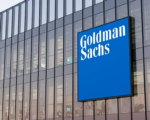In its final meeting of 2024, the Reserve Bank of Australia (RBA) decided to leave interest rates unchanged, signaling a shift towards a more dovish approach. The central bank noted that it was gaining “some confidence” that inflation was gradually moving back toward its target, easing previous concerns about the need for further tightening.
Following the announcement, the Australian dollar dropped 0.8%, falling to $0.6380, while three-year bond futures surged, reaching their highest point since October. Market expectations now indicate a potential rate cut in February, with a full rate easing priced in by April.
The RBA maintained its cash rate at 4.35%, the level it has held throughout 2024. The statement issued by the central bank notably omitted previous language about keeping policy restrictive, further suggesting a shift in tone. Governor Michele Bullock had previously stated that inflation remained too high for a near-term rate cut, but the latest statement highlighted confidence that inflation was trending back toward the target band of 2-3%.
While the RBA’s policy stance has remained unchanged for over a year, with the current rate being significantly higher than the pandemic-era 0.1%, there are signs of economic slowdowns. Weak third-quarter growth data, a lack of expected consumer spending rebound, and soft business conditions — as reflected in a National Australia Bank survey — suggest the economy is not picking up pace as anticipated.
Markets had anticipated a potential dovish pivot after these economic indicators, raising questions about future rate cuts in the first quarter of 2025.

















